Passing by the stand of Samsung at CES 2024 in Las Vegas, even under the excessively bright lights of the fair, one is impressed by the many high-quality screens. But behind the brilliant images, there are many different technologies: the splendid MicroLEDs, MiniLEDs, 8K screens, OLEDs; and then the projectors, the soundbars. During CES 2024, we had Samsung engineers and industry experts explain how the technology behind Samsung TVs.
Samsung tells us about the technology of its TVs at CES 2024
Among the most impressive displays we saw at CES 2024 are the MicroLED panels. These are microscopic LEDs, which light up to ensure perfect contrast and also enormous energy efficiency. They are so tiny that Samsung showed us a pinch of them in a test tube: it looks like sand, when not tidy and electrified. Looking at them under a microscope next to a human hair, the modules are much smaller.
Samsung showed us the precise machinery and sophisticated algorithms that uses to transfer the MicroLEDs onto the modules. But also how it connects the modules without visible interruptions, thus ensuring a uniform screen without spacing between the individual components.
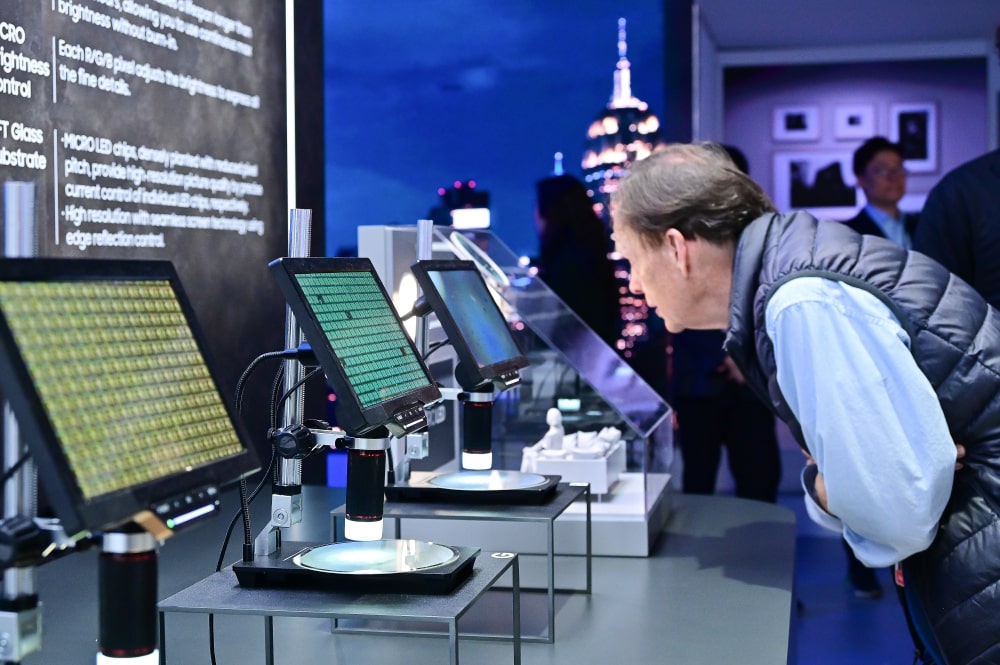
These solutions simplify the production process of MicroLED panels, which do not have the limitations of normal LEDs nor those of organic solutions such as OLEDs. If construction technology continues to improve, these displays could reach more affordable prices and also find their way into our TVs.
8K: A cinematographer’s perspective
In addition to the perspective of its engineers, Samsung also sought the opinion of world-class experts at CES 2024. As Pavel Achtelthe cinematographer who, among other things, built the 3D cameras used by James Cameron in Avatar: The Way of Water.
Achtel talks about 8K, which he defines as “a new medium”. In fact, the paradigm of filming for films, series and documentaries is changing. Normally, directors point the camera where they want people to look, cutting every 5 seconds. But Achtel explains: “With 8K it’s not enough, we should have at least 10 seconds per scene to capture the details. This will change the way we make films. And we will need bigger screens” to see them.
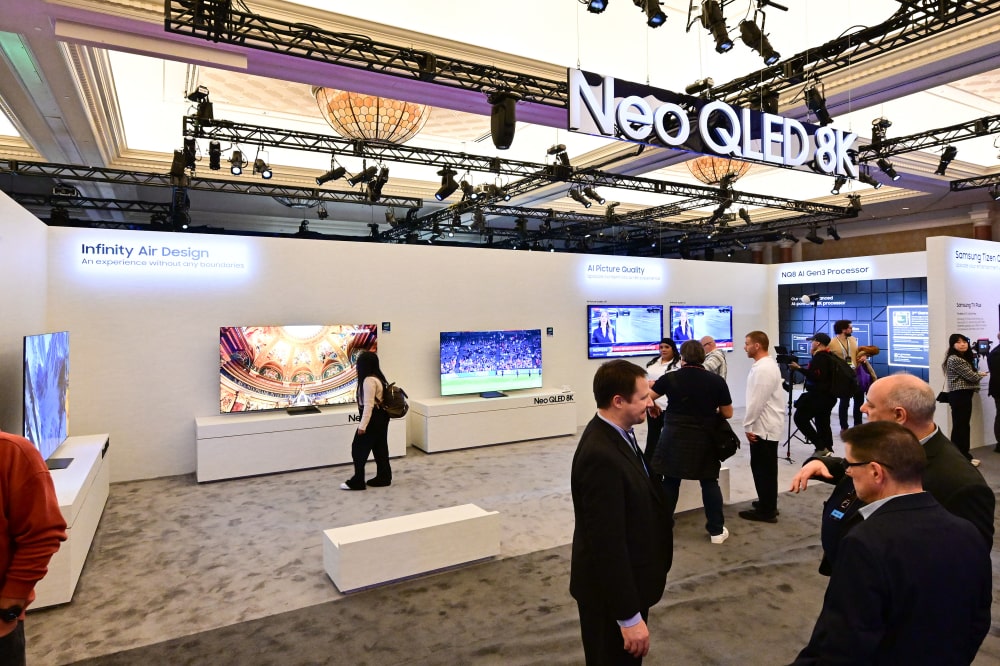
But not only. We will have to change the lenses of the cameras: only a few support 8K. And Achtel explains that some cameras boasting 8K don’t have enough contrast and detail – which is why he’s developing his own. To appreciate those shots, however, you need big screens. Even huge ones, like the Sphere in Las Vegas it shows, it shows the fact that people want to try this type of experience.
The lack of 8K content and Samsung’s upscaling
Achtel explains that Hollywood isn’t catching on to the 8K trend – most of the innovation comes from outside (he, for example, is Australian). For this reason, it becomes important to use content upscaling technologies, transforming 720p or 1080p series and films into 8K content.
Samsung explains to us that its neural network Quantum Super Resolution. This artificial intelligence analyzes the video to understand what type of content it is, what objects are on scene and what artifacts the low resolution brings with it (the “squares” or digital halos that we see in the content. In one sixtieth of a second, using AI, it can then produce an improved image.
The leap in quality seems impressive to us, though it is more complex to respect the creative intent of the directors. The AI cannot always understand if an object is out of focus due to the director’s choice or due to low resolution. For perfect images, you need to watch content shot in 8K: with all the details in the frame. But AI also makes it possible to enjoy even old movies and videos on Samsung’s impressive screens.
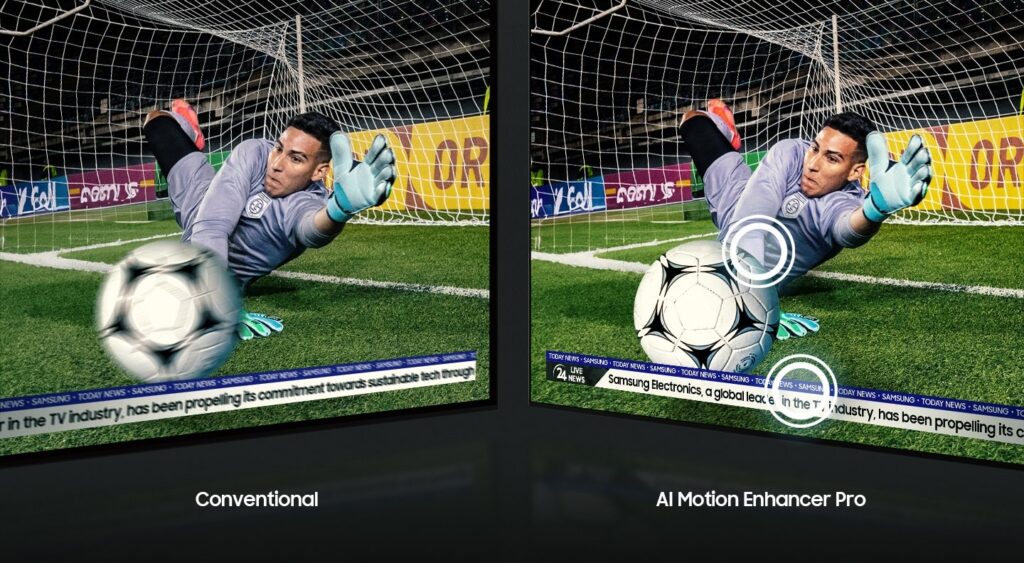
For those who love sport, there is an interesting news the elimination of flickering of moving objects, like baseballs during sports broadcasts, which without upscaling almost seem to disappear and reappear. Samsung implements sophisticated sports type recognition and motion prediction algorithms. Another AI makes it possible to make scrolling words better visible in news reports, or in other types of text.
I TV QLED e OLED di Samsung al CES 2024
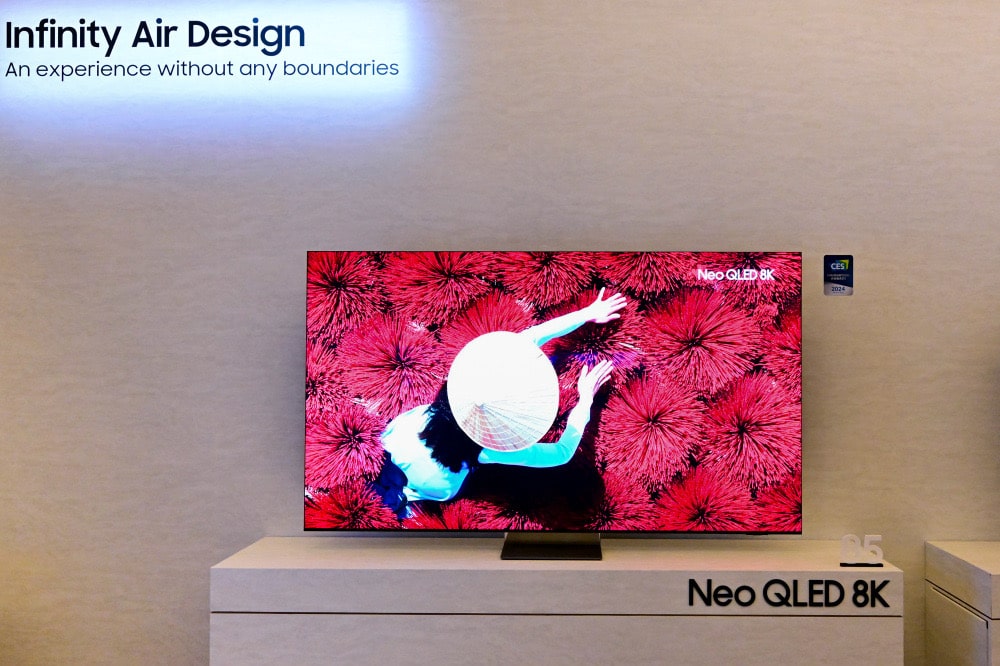
After surprising us with its most innovative technologies, Samsung made a more classic product comparison, to show us what’s new Neo QLED 4k coming this year. We could see how the colors are even more vivid and bright, with good performance in managing light and dark. To fully appreciate the quality of the new TVs, we will have to try them in better conditions than those at the fair – but they promise impressive images.
A technology that amazed us right away, however, is the technology “glare-free OLED” to reduce reflections on the screen. In the room light at CES, with two lights projected directly onto the new Samsung OLEDs and a rival OLED, we could clearly see the difference. The reflected light halo almost disappears on the TV with the Samsung treatment. Even in black and white content, where the light should be visible a lot, the discomfort is minimal. And once the lights are turned off, the contrast quality of the OLED shines just as well, uncompromisingly in the dark. We can’t wait to try one.
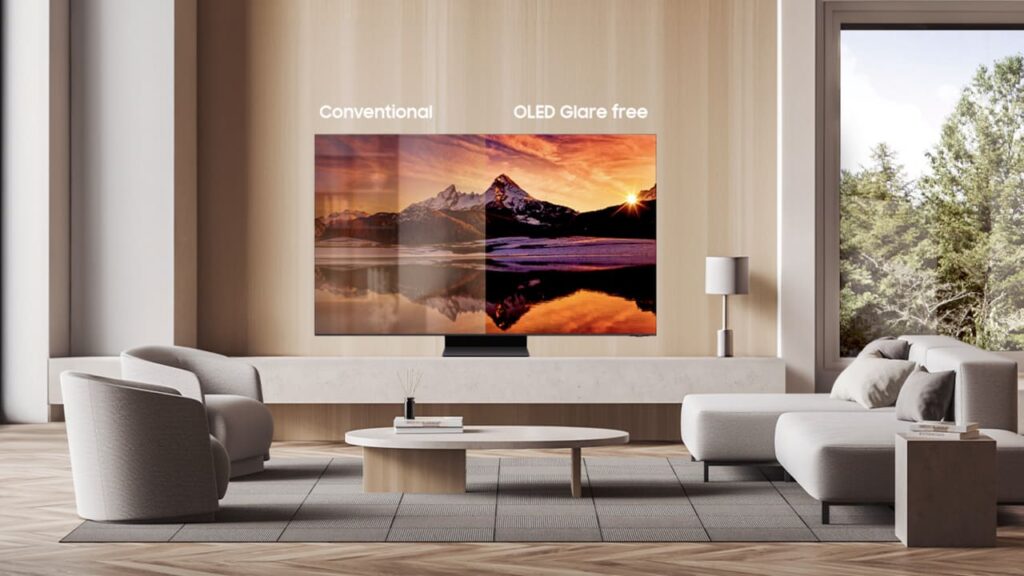
Audio news, Freestyle and more
In a particularly detailed session at CES 2024, Samsung also showed us other technological innovations, in addition to those of its TVs. For example, we saw the calibration of second generation Freestyle headlights on non-flat surfaces. If projected onto curtains or into the corners of a wall, the AI can correct and recalibrate the image to see it at its best. And it can even combine multiple Freestyle projections for a single, larger image.
We then heard the surround sound of IAMF, a collaboration with YouTube for an open standard for spatial audio. Something that soundbars, TVs and speakers will implement alongside other proprietary solutions (such as Dolby Atmos).
Finally, we appreciated the “Artful Color” functionality validated by Pantone for The Frame, the Samsung TV that looks like a painting. But unlike a painting, a TV emits light, not just reflects it. So if the lighting changes, it shows different shades. Not with the new feature of The Frame, which manages to adapt to changing light in just a few seconds.
At CES 2024 in Las Vegas, Samsung showed us the technologies it’s working on – some of which we’ll see already later in the year. But above all, it takes the development of its TVs seriously. Which we can’t wait to try.






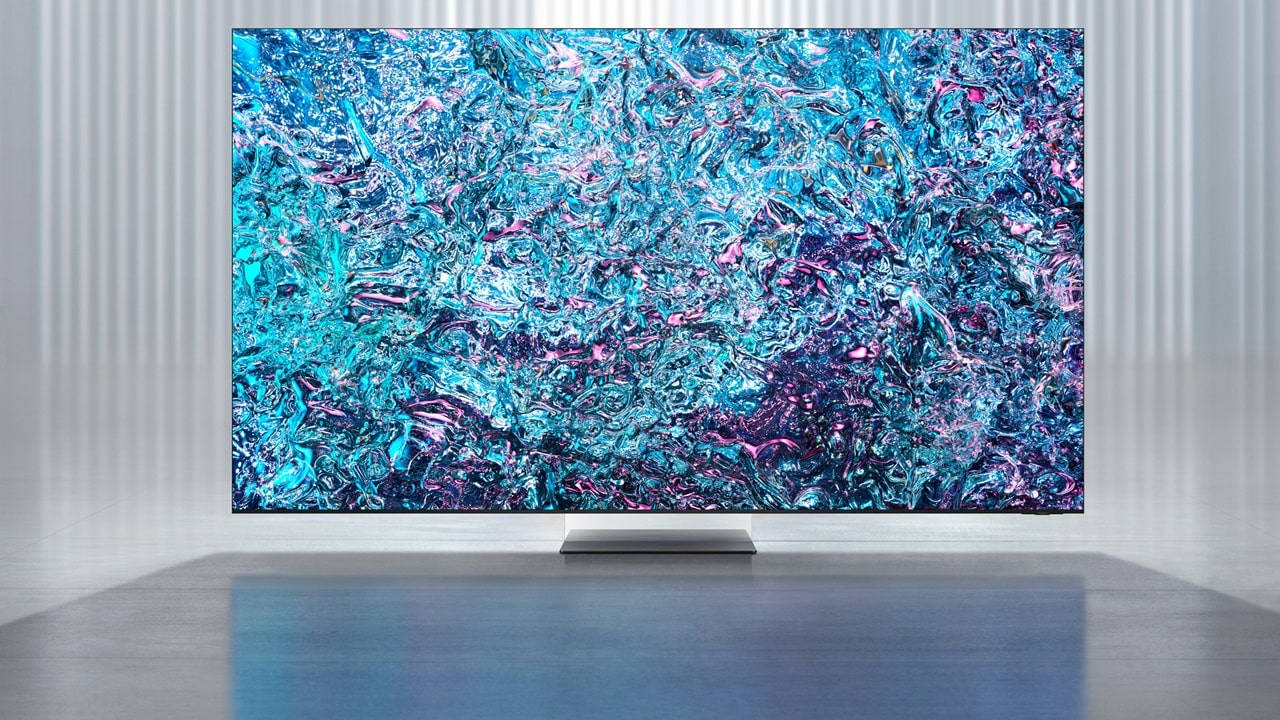








Leave a Reply
View Comments